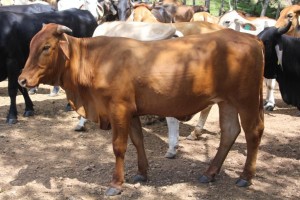While Panama has a huge amount of land in the production of beef cattle, it pales in comparison to Brazil. I read a recent article on the industry leader JBS that has grown from a family business to a $40 billion giant.
As reported in a Washington Post article:
In many ways, JBS, the company that owns the big slaughterhouse here on the edge of town, is still run like a family business.
The founder, who began by slaughtering one or two head a day in 1953, raises calves far in the countryside. Six of his children are in JBS’s management. And ranchers such as Edson Crochiquia, who is 69 but rounds up cattle on horseback near here, spare no detail to provide the company with healthy, 1,000-pound animals. Even a decade ago, JBS was still mainly focused on selling in Brazil. But by acquiring American giants such as Swift and Pilgrim’s Pride, JBS grew from a $1 billion private company into a $40 billion behemoth that slaughters 90,000 head of cattle a day, employs 125,000 workers and exports to 150 countries.
Here in Panama we also pasture raise beef and after reading this article, I would never want to eat another steak in the US or from any ” industrialized beef factory” ever again. Also, you can hold the “marbling” please or as it is correctly termed, intramuscular fat!!
Nearly half of US meat and poultry likely contaminated with Staph
Almost half the meat and poultry sold in the US is likely to be contaminated by highly dangerous bacteria, according to research published this month (April 2011) in the scientific journal, Clinical Infectious Diseases. The study estimates that 47 percent of the meat and poultry on US supermarket shelves contains the bacteria staphylococcus aureus (“Staph”). It is not, however, among the four bacteria—Salmonella, Campylobacter, E. coli, and Enterococcus—routinely tested in meat by the US government.
“Antibiotics are the most important drugs that we have to treat Staph infections; but when Staph are resistant to three, four, five or even nine different antibiotics — like we saw in this study — that leaves physicians few options,” Price said. Click here to read more.
Now if that doesn’t make you sick, try this on for size.
New term you need to know: “by-product feedstuffs”
Fresh pasture and dried grasses are the natural diet of all ruminant animals. In factory farms, animals are switched to an unnatural diet based on corn and soy. But corn and soy are not the only ingredients in their “balanced rations.” Many large-scale dairy farmers and feedlot operators save money by feeding the cows “by-product feedstuffs” as well. In general, this means waste products from the manufacture of human food. In particular, it can mean sterilized city garbage, candy, bubble gum, floor sweepings from plants that manufacture animal food, bakery, potato wastes or a scientific blend of pasta and candy.
Here are some of the “by-product feedstuffs commonly used in dairy cattle diets in the Upper Midwest.”*
- Candy. Candy products are available through a number of distributors and sometimes directly from smaller plants… They are sometimes fed in their wrappers…. Candies, such as cull gummy bears, lemon drops or gum drops are high in sugar content.
- Bakery Wastes. Stale bread and other pastry products from stores or bakeries can be fed to dairy cattle in limited amounts. These products are sometimes fed as received without drying or even removal of the wrappers.
- Potato Waste is available in potato processing areas, and includes cull potatoes, French fries and potato chips. Cull fresh potatoes that are not frozen, rotten, or sprouted can be fed to cows either whole or chopped. Potato waste straight from a processing plant may contain varying amounts of inedible or rotten potatoes. French fries and chips contain fats or oils from frying operations.
- Starch. Unheated starch is available from some candy manufacturers and sometimes may contain pieces of candy.
- Pasta is available from pasta plants and some ingredient distributors as straight pasta or in blends with other ingredients, such as candy.
*This list is excerpted from “By-Product Feedstuffs in Dairy Cattle Diets in the Upper Midwest,” published in 2008 by the College of Agricultural and Life Sciences at the University of Wisconsin at Madison.
For more news from Eatwild click here
Our cattle are 100% grass fed pastured animals. For more information on the cattle business and investment drop us a line. My partner has over 2500 acres of land and a herd of over 500 head of cattle that is growing daily. We are aquiring additional land here in Boquete and have extensive knowledge about this business.
Stress Free Happy Cattle!


